Traditionalist Issues
 |
 |
 |
 |
 |
 |
 |
Dialogue Mass - CXXIII
‘People Infallibility’ versus Papal Infallibility
Papal supremacy was the chief target of Modernist criticism, hence the many calls for decentralization of the papacy and recognition of the laity as the supreme, infallible, collective guarantor of the Faith. For Fr. George Tyrrell, the Pope was “merely the witness to and the representative of the collective mind and will of the Universal Church,” and his ex cathedra pronouncements are valid “only when it is manifestly the whole body that speaks to us through that particular organ.” (1) And he summed up the role of the Pope in this way:
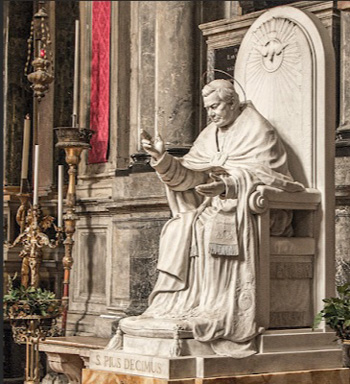 “His office is to investigate, declare and impose with official authority on each that truth which under the guidance of the Holy Spirit has been elaborated in the minds of all collectively as by its sole adequate organ.” (2)
“His office is to investigate, declare and impose with official authority on each that truth which under the guidance of the Holy Spirit has been elaborated in the minds of all collectively as by its sole adequate organ.” (2)
In other words, the Pope is subservient to the people and can only teach what they have already decided to believe.
The Syllabus Lamentabili sane § 6 of Pope Pius X, however, had condemned under pain of excommunication the notion that the function of the Church is to ratify the conclusions arrived at by the people at large.
Tyrrell’s position thus stands revealed as the forerunner of Pope Francis’s “Synodal Way,” itself derived from the Neo-Modernist thinking of Vatican II.
Fr. Tyrrell’s ‘formless Church’
Fr. Tyrrell’s prolific output of published works acted as a sort of engine house for the spread of Modernism in the 20th century and up to our day. His ideas are still the inspirational model for all who believe that the old two-tier system of hierarchical government was unjust and oppressive, and who today advocate a “Church without walls/frontiers.” He wrote, for instance, about a “pre-constitutional formless Church” of early Christian times which, in his view, must be distinguished from the “governmental form,” the latter being purely an artificially created construct. (3)
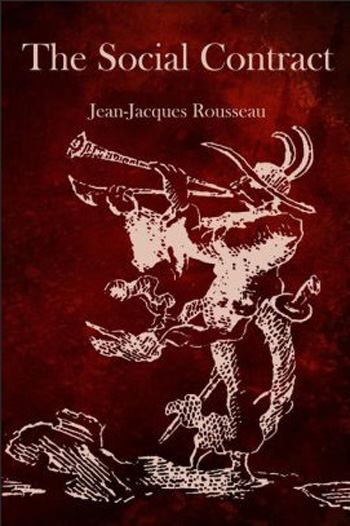 He would even make this formless church the rule of faith, based on nothing other than the “collective conscience” of the multitude of believers:
He would even make this formless church the rule of faith, based on nothing other than the “collective conscience” of the multitude of believers:
“Authority is something inherent in, and inalienable from, that multitude itself; it is the moral coerciveness of the Divine Spirit of Truth and Righteousness immanent in the whole, dominant over its several parts and members; it is the imperativeness of the collective conscience.” (4)
This amounts to the whole body governed by the general mind and will, (5) which is a form of government modeled on Rousseau’s Social Contract. There is no place, therefore, for a monarchical ruler like the Pope. Like all Modernists of the time, Fr. Tyrrell believed that “all spiritual and moral power is inherent in the people and derives from the people.” (6) As Fr. Tyrrell further elaborated;
“What Christ founded was not the hierarchic Church but the little body of missionary brethren, which subsequently, under the guidance of Christ’s Spirit, organized itself into the Catholic Church; that he did not directly commission some of them to teach and rule over the rest; but commissioned all of them equally to go and teach all nations and prepare them by the baptism of repentance and by a new life for the instant coming of the Kingdom of God upon earth.”(7) [emphasis added]
There is no doubt that this is exactly what progressivists, both clerical and lay, believe, and that they are supported in their errors by high-ranking officials in the Church.
Francis misquotes Scripture to make a ‘democratic’ point
Now we have had Pope Francis echoing these sentiments. On October 17, 2015 during a ceremony commemorating the 50th anniversary of the institution of the Synod of Bishops, he stated:
“After stating that the people of God is comprised of all the baptized who are called to ‘be a spiritual house and a holy priesthood,’ the Second Vatican Council went on to say that ‘the whole body of the faithful, who have an anointing which comes from the Holy One (cf. 1 Jn 2:20, 27), cannot err in matters of belief. This characteristic is shown in the supernatural sense of the faith (sensus fidei) of the whole people of God, when ‘from the bishops to the last of the faithful’ it manifests a universal consensus in matters of faith and morals.’ These are the famous words infallible ‘in credendo.’”
The problem with this passage is that it contains, to say the least, a number of seriously misleading statements, including a misuse of the First Epistle of St. John, drawn from Lumen gentium §12 to bolster the novel teaching of Vatican II. The Pope’s reference to the “universal consensus of all the baptized” is meaningless, for not every baptized Christian – including, alas, modern Popes and Bishops – has always remained faithful to the teaching of the Apostles.
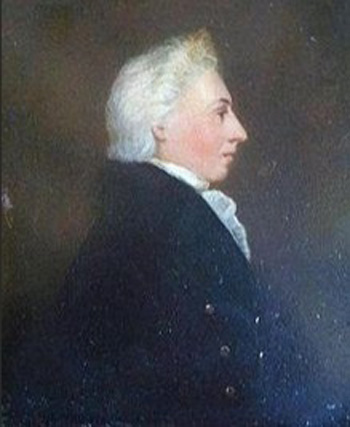 Such infallibility, as pre-Vatican II Catholics always knew, can only apply within the unity of the Catholic Faith to those who command with authority (the Hierarchy) and those who obey with docility (the laity). In other words, as Fr. George Leo Haydock (8) explained in his commentary that accurately expresses the Church’s traditional interpretation of 1 John 2:20, only the “true children of God’s Church, remaining in unity, under the guidance of their lawful pastors, partake of the grace of the Holy Ghost, promised to the Church and her pastors.” (9)
Such infallibility, as pre-Vatican II Catholics always knew, can only apply within the unity of the Catholic Faith to those who command with authority (the Hierarchy) and those who obey with docility (the laity). In other words, as Fr. George Leo Haydock (8) explained in his commentary that accurately expresses the Church’s traditional interpretation of 1 John 2:20, only the “true children of God’s Church, remaining in unity, under the guidance of their lawful pastors, partake of the grace of the Holy Ghost, promised to the Church and her pastors.” (9)
That was the true meaning of 1 John 2:20 which Pope Francis misrepresents because, like all progressivists influenced by Modernism, he does not wish to acknowledge that the members of the Hierarchy, as Successors of the Apostles, are the Ecclesia Docens whose duty is to guard the Deposit of the Faith and ensure unity in doctrine.
Ironically, the First Epistle of St. John was written precisely as a warning about the dangers of “false prophets” who seduce the faithful with theories that lead them into error. In it, St. John reminds them that they have in the Church all necessary knowledge and instruction, so as to have no need to seek it elsewhere, since it can be only found in that society of which they are members. It is a statement about the “perfect society” of the Church ‒ which progressivists Church leaders reject ‒ not an acknowledgement of personal infallibility of all the baptized.
Similarly, in regard to 1 John 2:27, also misconstrued by Pope Francis, the “anointing” (which St. John calls “unction”) signifies the true doctrine that the faithful have received from the Holy Ghost through the teaching of the Apostles. Whereas St. John was telling the faithful to avoid teachers of false doctrines, Pope Francis has encouraged a proliferation of them together with their doctrinal novelties which cannot be reconciled with Tradition.
To take liberties with passages of Scripture and the Church Fathers in order to justify one’s own ideas is a sure way of giving license to all the Modernist errors condemned by previous Popes.
Vatican II (and Pope Francis) misquote St. Augustine
It should also be mentioned that St. Augustine’s words “from the Bishops to the last of the faithful” quoted from Lumen gentium have been wrenched from their original context and made to serve a different purpose. These words, taken from St. Augustine’s book On Predestination, had a specific point – to refute the errors of the Pelagians and to show that the Book of Wisdom is endowed with the authority of canonical Scripture. It is for this reason that St. Augustine said regarding Wisdom:
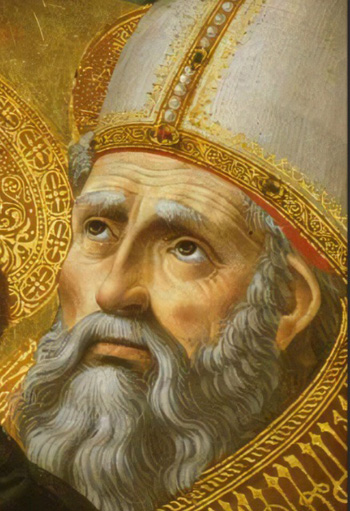 “[It] deserves to be heard by all Christians, from Bishops downwards, even to the lowest lay believers, penitents and catechumens, with the veneration paid to divine authority.” (10)
“[It] deserves to be heard by all Christians, from Bishops downwards, even to the lowest lay believers, penitents and catechumens, with the veneration paid to divine authority.” (10)
It follows, naturally, that the faithful in every age who accept it on that basis are infallibly justified in doing so, not because they are infallible in themselves (as Lumen gentium leads us to believe), but because of the inerrancy of Scripture and Tradition which have been faithfully guarded and passed on to them by the Church’s Hierarchy.
Very different is the approach of Lumen gentium §12 which uses St. Augustine’s phrase, but without his reference to “divine authority” mediated through the Hierarchy as the basis for infallibility in believing. Instead, it promoted what is generally perceived as a “charismatic Church” in which individual Christians receive special spiritual gifts (charismata) directly from God “to undertake the various tasks and offices that contribute toward the renewal and building up of the Church.”
The inflated rhetoric of Lumen gentium §12 with its pretentious vision – so typical of the Vatican II documents – is simply a form of doublespeak that disguises a progressivist agenda detrimental to the Ecclesia Docens. The task of guarding the Faith is now understood as the responsibility of the whole Church, collaborating in the office of teaching, rather than as the sole possession of the Magisterium.
But this untenable position – that “the ‘Church learning’ and the ‘Church teaching’ collaborate in such a way in defining truths that it only remains for the ‘Church teaching’ to sanction the opinions of the ‘Church learning’” – had been condemned in 1907 by Pope Pius X (Lamentabili sane § 6) as heretical. As a result, the teaching of Vatican II is bereft of authoritative force. It is significant that this democratic model of the Church, built on the liberation of the “People of God” from “clericalist” control, bears an uncanny resemblance to that proposed by Fr. Tyrrell.
The situation of the post-Vatican II Church begs the question as to who, then, needs a Pope to guarantee infallibility of doctrine, if all that is needed is to consult one’s inner Martin Luther or leaf through the works of Fr. Tyrrell.
Continued

Lamentabili sane by St. Pius X condemned the proposition of Fr. Tyrrel echoed by Pope Francis
In other words, the Pope is subservient to the people and can only teach what they have already decided to believe.
The Syllabus Lamentabili sane § 6 of Pope Pius X, however, had condemned under pain of excommunication the notion that the function of the Church is to ratify the conclusions arrived at by the people at large.
Tyrrell’s position thus stands revealed as the forerunner of Pope Francis’s “Synodal Way,” itself derived from the Neo-Modernist thinking of Vatican II.
Fr. Tyrrell’s ‘formless Church’
Fr. Tyrrell’s prolific output of published works acted as a sort of engine house for the spread of Modernism in the 20th century and up to our day. His ideas are still the inspirational model for all who believe that the old two-tier system of hierarchical government was unjust and oppressive, and who today advocate a “Church without walls/frontiers.” He wrote, for instance, about a “pre-constitutional formless Church” of early Christian times which, in his view, must be distinguished from the “governmental form,” the latter being purely an artificially created construct. (3)

Progressivists apply the principles of the Social Contract to destroy Monarchy in the Church
“Authority is something inherent in, and inalienable from, that multitude itself; it is the moral coerciveness of the Divine Spirit of Truth and Righteousness immanent in the whole, dominant over its several parts and members; it is the imperativeness of the collective conscience.” (4)
This amounts to the whole body governed by the general mind and will, (5) which is a form of government modeled on Rousseau’s Social Contract. There is no place, therefore, for a monarchical ruler like the Pope. Like all Modernists of the time, Fr. Tyrrell believed that “all spiritual and moral power is inherent in the people and derives from the people.” (6) As Fr. Tyrrell further elaborated;
“What Christ founded was not the hierarchic Church but the little body of missionary brethren, which subsequently, under the guidance of Christ’s Spirit, organized itself into the Catholic Church; that he did not directly commission some of them to teach and rule over the rest; but commissioned all of them equally to go and teach all nations and prepare them by the baptism of repentance and by a new life for the instant coming of the Kingdom of God upon earth.”(7) [emphasis added]
There is no doubt that this is exactly what progressivists, both clerical and lay, believe, and that they are supported in their errors by high-ranking officials in the Church.
Francis misquotes Scripture to make a ‘democratic’ point
Now we have had Pope Francis echoing these sentiments. On October 17, 2015 during a ceremony commemorating the 50th anniversary of the institution of the Synod of Bishops, he stated:
“After stating that the people of God is comprised of all the baptized who are called to ‘be a spiritual house and a holy priesthood,’ the Second Vatican Council went on to say that ‘the whole body of the faithful, who have an anointing which comes from the Holy One (cf. 1 Jn 2:20, 27), cannot err in matters of belief. This characteristic is shown in the supernatural sense of the faith (sensus fidei) of the whole people of God, when ‘from the bishops to the last of the faithful’ it manifests a universal consensus in matters of faith and morals.’ These are the famous words infallible ‘in credendo.’”
The problem with this passage is that it contains, to say the least, a number of seriously misleading statements, including a misuse of the First Epistle of St. John, drawn from Lumen gentium §12 to bolster the novel teaching of Vatican II. The Pope’s reference to the “universal consensus of all the baptized” is meaningless, for not every baptized Christian – including, alas, modern Popes and Bishops – has always remained faithful to the teaching of the Apostles.

Fr. George Leo Haydock
That was the true meaning of 1 John 2:20 which Pope Francis misrepresents because, like all progressivists influenced by Modernism, he does not wish to acknowledge that the members of the Hierarchy, as Successors of the Apostles, are the Ecclesia Docens whose duty is to guard the Deposit of the Faith and ensure unity in doctrine.
Ironically, the First Epistle of St. John was written precisely as a warning about the dangers of “false prophets” who seduce the faithful with theories that lead them into error. In it, St. John reminds them that they have in the Church all necessary knowledge and instruction, so as to have no need to seek it elsewhere, since it can be only found in that society of which they are members. It is a statement about the “perfect society” of the Church ‒ which progressivists Church leaders reject ‒ not an acknowledgement of personal infallibility of all the baptized.
Similarly, in regard to 1 John 2:27, also misconstrued by Pope Francis, the “anointing” (which St. John calls “unction”) signifies the true doctrine that the faithful have received from the Holy Ghost through the teaching of the Apostles. Whereas St. John was telling the faithful to avoid teachers of false doctrines, Pope Francis has encouraged a proliferation of them together with their doctrinal novelties which cannot be reconciled with Tradition.
To take liberties with passages of Scripture and the Church Fathers in order to justify one’s own ideas is a sure way of giving license to all the Modernist errors condemned by previous Popes.
Vatican II (and Pope Francis) misquote St. Augustine
It should also be mentioned that St. Augustine’s words “from the Bishops to the last of the faithful” quoted from Lumen gentium have been wrenched from their original context and made to serve a different purpose. These words, taken from St. Augustine’s book On Predestination, had a specific point – to refute the errors of the Pelagians and to show that the Book of Wisdom is endowed with the authority of canonical Scripture. It is for this reason that St. Augustine said regarding Wisdom:

St. Augustine of Hippo is misquoted to justify the supposed infallibility of the people
It follows, naturally, that the faithful in every age who accept it on that basis are infallibly justified in doing so, not because they are infallible in themselves (as Lumen gentium leads us to believe), but because of the inerrancy of Scripture and Tradition which have been faithfully guarded and passed on to them by the Church’s Hierarchy.
Very different is the approach of Lumen gentium §12 which uses St. Augustine’s phrase, but without his reference to “divine authority” mediated through the Hierarchy as the basis for infallibility in believing. Instead, it promoted what is generally perceived as a “charismatic Church” in which individual Christians receive special spiritual gifts (charismata) directly from God “to undertake the various tasks and offices that contribute toward the renewal and building up of the Church.”
The inflated rhetoric of Lumen gentium §12 with its pretentious vision – so typical of the Vatican II documents – is simply a form of doublespeak that disguises a progressivist agenda detrimental to the Ecclesia Docens. The task of guarding the Faith is now understood as the responsibility of the whole Church, collaborating in the office of teaching, rather than as the sole possession of the Magisterium.
But this untenable position – that “the ‘Church learning’ and the ‘Church teaching’ collaborate in such a way in defining truths that it only remains for the ‘Church teaching’ to sanction the opinions of the ‘Church learning’” – had been condemned in 1907 by Pope Pius X (Lamentabili sane § 6) as heretical. As a result, the teaching of Vatican II is bereft of authoritative force. It is significant that this democratic model of the Church, built on the liberation of the “People of God” from “clericalist” control, bears an uncanny resemblance to that proposed by Fr. Tyrrell.
The situation of the post-Vatican II Church begs the question as to who, then, needs a Pope to guarantee infallibility of doctrine, if all that is needed is to consult one’s inner Martin Luther or leaf through the works of Fr. Tyrrell.
Continued
- George Tyrrell, Medievalism, a Reply to Cardinal Mercier, London: Longmans, Green, and Co., 1908, p. 43.
- G. Tyrrell, The Church and the Future, London: Priory Press, 1910, p. 100.
- G. Tyrrell, Through Scylla and Charybdis or, The old theology and the new, Longmans, Green, 1907, p. 49.
- Ibid., p. 370.
- G. Tyrell, The Church and the Future, p. 133.
- G. Tyrrell, Through Scylla and Charybdis, p. 355.
- G. Tyrrell, Medievalism, pp. 138-139.
- Fr. George Leo Haydock (1774–1849), a descendant an old English Catholic recusant family, spent much of his life serving in Catholic missions in rural England. He was related to Blessed George Haydock who was martyred for the Faith at Tyburn in 1584.
- See Haydock’s Catholic Bible Commentary (Edward Dunigan and Brother, 1859). Based on the Douay-Rheims Bible, and containing many contributions from the Church Fathers, it was highly regarded as an authoritative commentary on the Old and New Testaments. Before Vatican II, it enjoyed popularity throughout the English-speaking world, but was supplanted by a host of modernized versions e.g. the Confraternity Bible (1941) and the New American Bible (1970).
- St. Augustine, De Praedestinatione Sanctorum (On the Predestination of the Saints), Opera Omnia. Patrologia Latina, vol. 44, Paris: Garnier, 1879, Chapter 14, § 27, p. 980.
Posted February 6, 2023
______________________
______________________
 Volume I |
 Volume II |
 Volume III |
 Volume IV |
 Volume V |
 Volume VI |
 Volume VII |
 Volume VIII |
 Volume IX |
 Volume X |
 Volume XI |
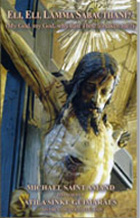 Special Edition |